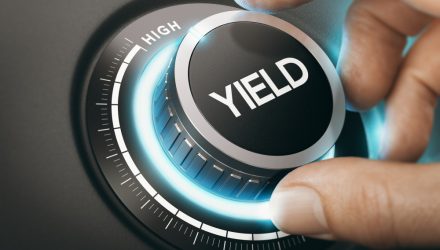While fixed income is considered the safe, boring asset class in a portfolio, there’s a subcategory that’s a little riskier. High yield bonds are below investment-grade corporate bonds that credit rating agencies have rated below BBB- or Baa3.
There are a number of reasons for this below investment-grade rating. The issuer could be highly leveraged. Or they’re facing financial difficulties. Or they’re a smaller or emerging company.
Whatever the reason, these so-called “junk bonds” come with a greater risk of default. But with this higher risk comes the potential for higher rewards.
See more: “What’s Inside Active Bond ETFs”
Earning Its Name
High yield bonds offer what the name suggests. The yield for the two-year U.S. Treasury note as of July 18 was 4.753%. The dividend yield for the S&P U.S. Aggregate Bond Index during the same period was 4.86%. Meanwhile, the ICE BofA US High Yield Index Effective Yield was 8.08%.
“High yield bonds offer greater yields than investment-grade corporate bonds and government bonds,” said JoAnne Bianco, a partner at fixed income specialist BondBloxx Investment Management.
High Yield Less Risky Than Stocks…
It’s also important to note that although they are described as risky, that’s relative to other bonds. While less safe than, say, Treasuries, high yield is still far less unpredictable than stocks. And according to Bianco, that’s thanks to its “significant coupon income component.”
“The significant coupon income component of high yield means that the asset class tends to be less volatile than equities,” she said. And while the asset class is less volatile, it can still offer “equity-like, long term total returns.”
Bianco added that the volatility of returns is actually closer to investment-grade corporates than to equities. That’s because “the coupon income cushions price declines and offers a higher margin of error than equities.”
There are other benefits that it brings to a well-diversified portfolio. For one thing, high yield bond funds generally exhibit a low correlation to other sectors of fixed income. Plus, they’re also typically shorter in duration than higher-rated fixed income asset classes. This reduces their exposure to rising interest rate environments.
…But Still Carrying Risk
While it does indeed have some tailwinds unique to the asset class, it’s important to go over the headwinds. Yes, when compared to higher-rated investment grade corporate bond funds, high yield bond funds carry more default risk. But that’s not the only issue.
Bianco pointed out that the asset class is more sensitive to economic conditions and outlooks. Meaning, they can spike during periods of economic stress.
Focused Vs. Broad Exposure
Throughout its inception, the U.S. high yield bond market has shown wide variations in returns across industry sectors and credit rating categories. The median annual broad return from 1996 to 2022 was 5.7%. However, the range between the best and worst performing industry sectors was 13.3%.
So, Bianco suggested that it may be a good idea for investors to target via sector or credit rating than through broad exposure.
“Capitalizing on the potential for continued dispersion within high yield can create opportunities for outperformance for investors,” she said.
BondBloxx has a suite of seven industry sector-specific high-yield bond ETFs that offer precise exposure.
Overwhelmingly Positive Returns for High Yield
Ultimately, annual returns have been overwhelmingly positive throughout the category’s history. High yield indices were down only five of their 26 years in existence. Of those five years, only two were they down more than 5%.
“U.S. high yield has outperformed all other sectors of U.S. fixed income over longer-term time horizons,” Bianco said. She added this reflects “its significant coupon income component.” It also demonstrates the “potential for capital appreciation versus fixed income alternatives.”
VettaFi’s head of research Todd Rosenbluth said: “Advisors are increasingly comfortable taking on credit risk and eager to earn higher income. We have seen sentiment shift away from government bonds to high yield bonds on VettaFi platforms.”
BondBloxx will be represented at the VettaFi Fixed Income Symposium on July 24 by Co-Founder Joanna Gallegos.
For more news, information, and analysis, visit the Institutional Income Strategies Channel.

